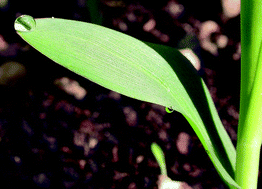Rapid analysis of neonicotinoidinsecticides in guttation drops of corn seedlings obtained from coated seeds
Abstract
Regarding the hypothesis that

* Corresponding authors
a
Università degli Studi di Padova, Dipartimento di Scienze Chimiche, via Marzolo 1, Padova, Italy
E-mail:
andrea.tapparo@unipd.it
b
Università degli Studi di Padova, Dipartimento di Agronomia Ambientale e Produzioni Vegetali, Agripolis – viale dell'Università 16, Legnaro (Padova), Italy
E-mail:
vincenzo.girolami@unipd.it
Regarding the hypothesis that

 Please wait while we load your content...
Something went wrong. Try again?
Please wait while we load your content...
Something went wrong. Try again?
A. Tapparo, C. Giorio, M. Marzaro, D. Marton, L. Soldà and V. Girolami, J. Environ. Monit., 2011, 13, 1564 DOI: 10.1039/C1EM10085H
To request permission to reproduce material from this article, please go to the Copyright Clearance Center request page.
If you are an author contributing to an RSC publication, you do not need to request permission provided correct acknowledgement is given.
If you are the author of this article, you do not need to request permission to reproduce figures and diagrams provided correct acknowledgement is given. If you want to reproduce the whole article in a third-party publication (excluding your thesis/dissertation for which permission is not required) please go to the Copyright Clearance Center request page.
Read more about how to correctly acknowledge RSC content.
 Fetching data from CrossRef.
Fetching data from CrossRef.
This may take some time to load.
Loading related content
